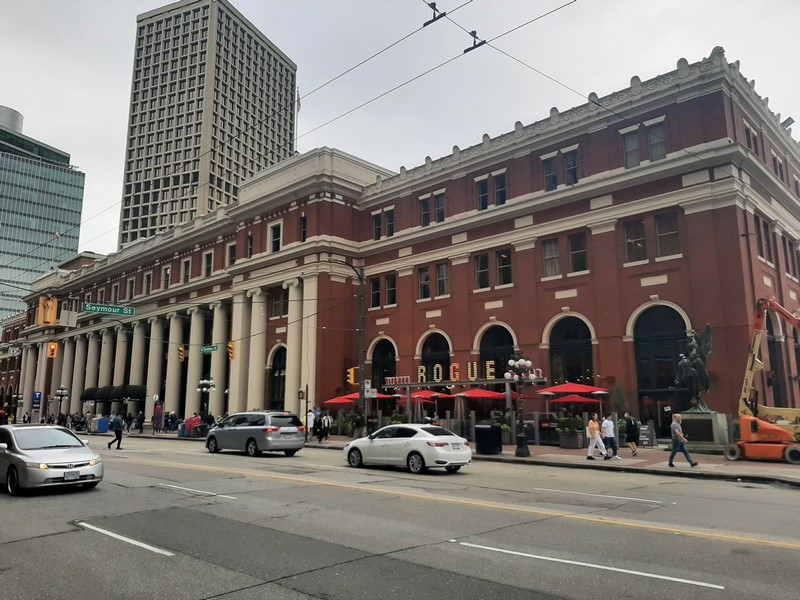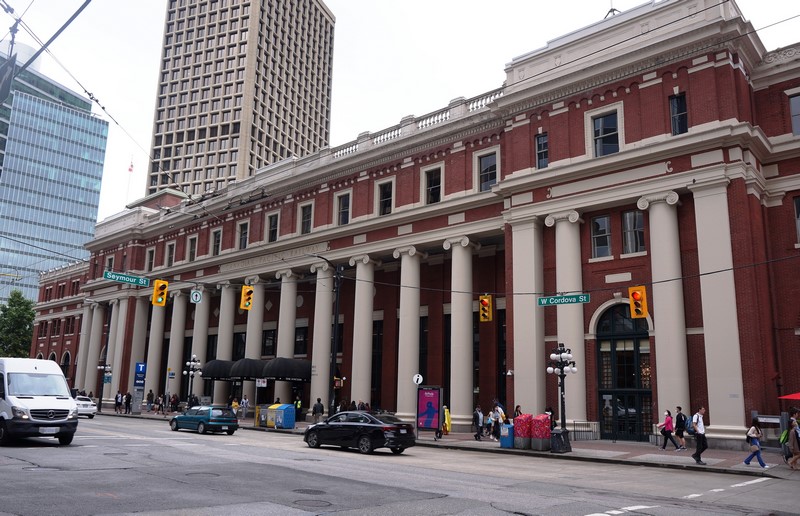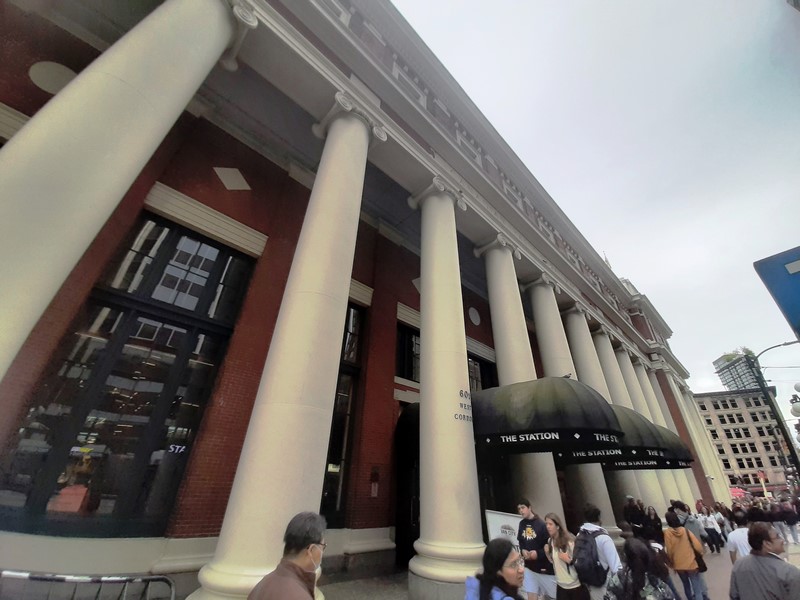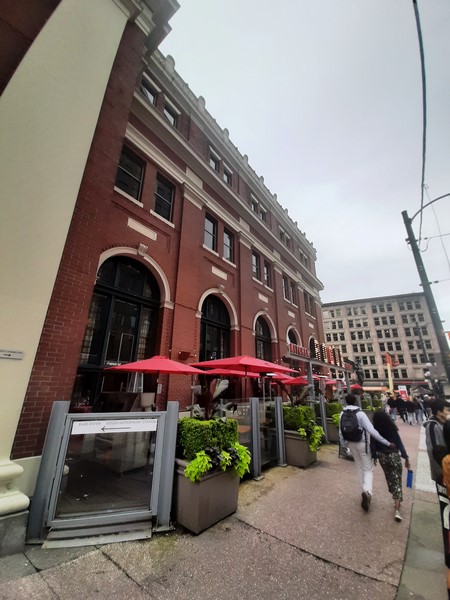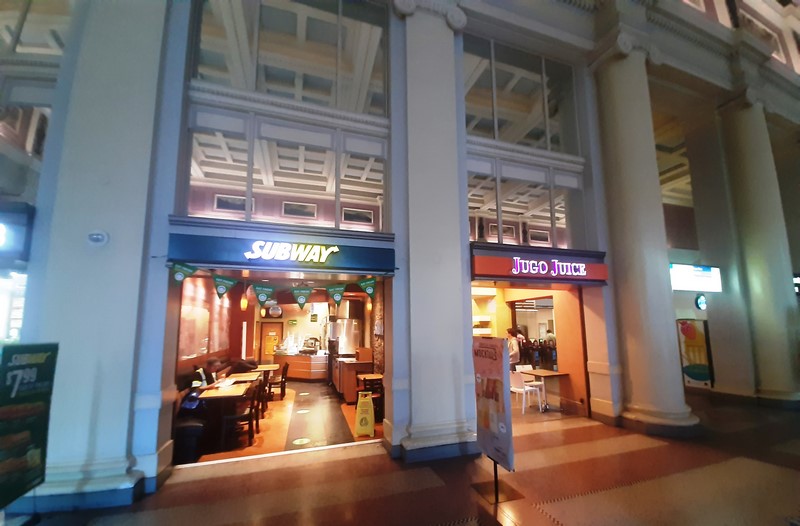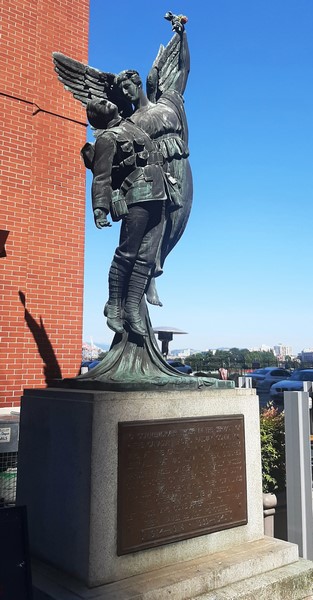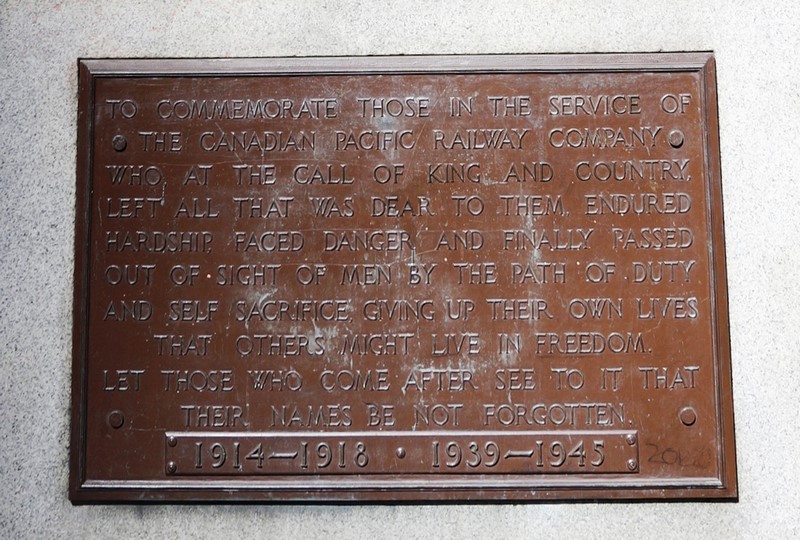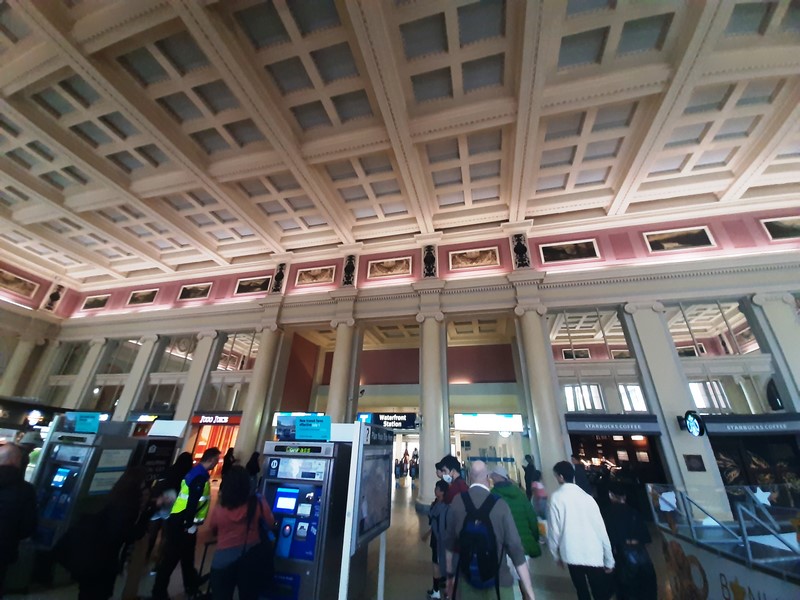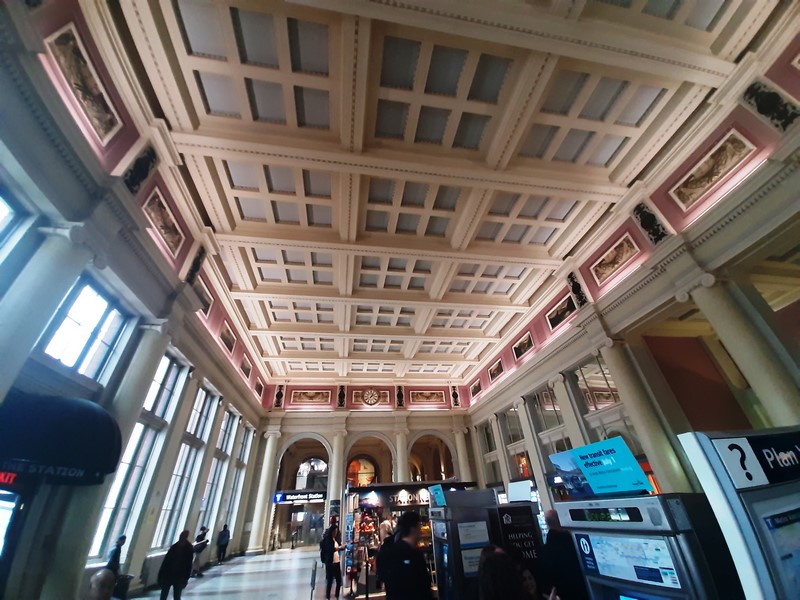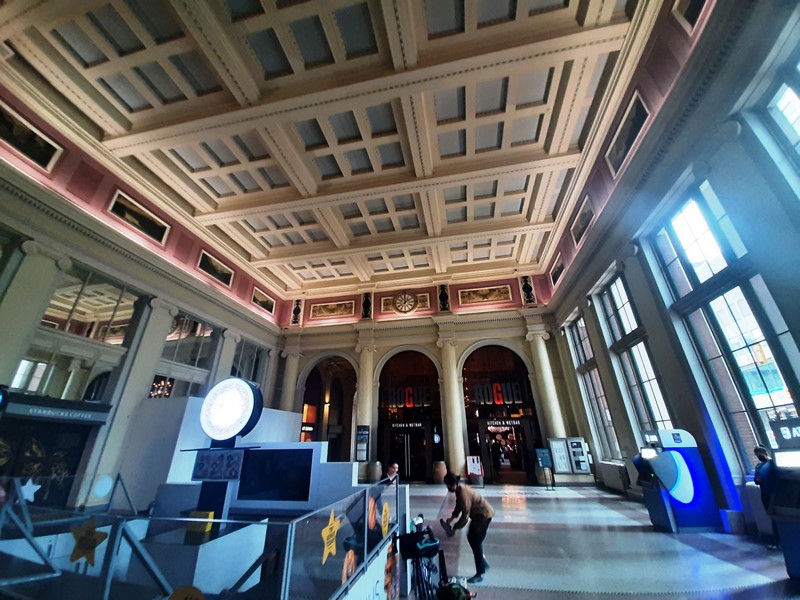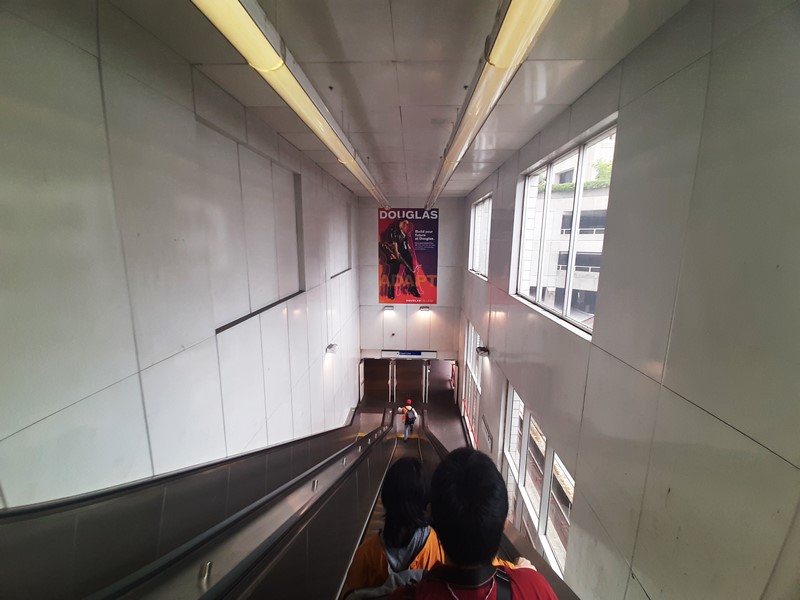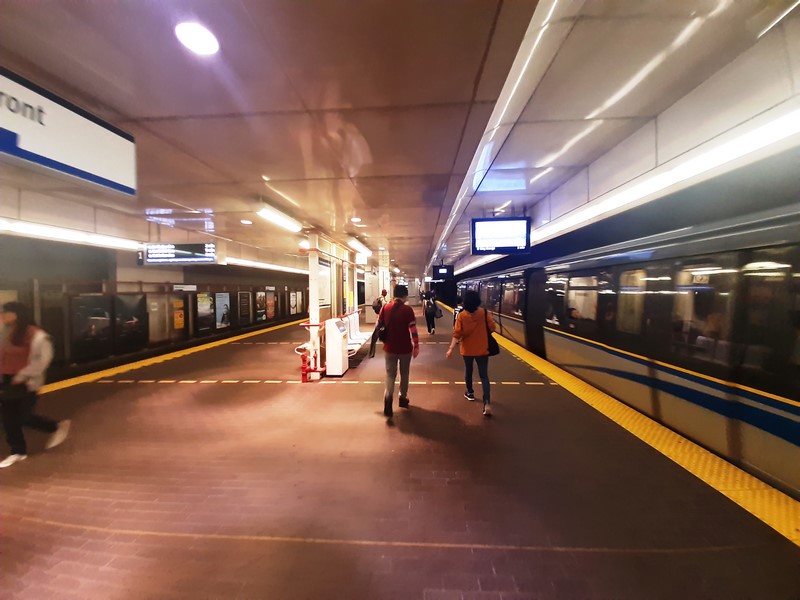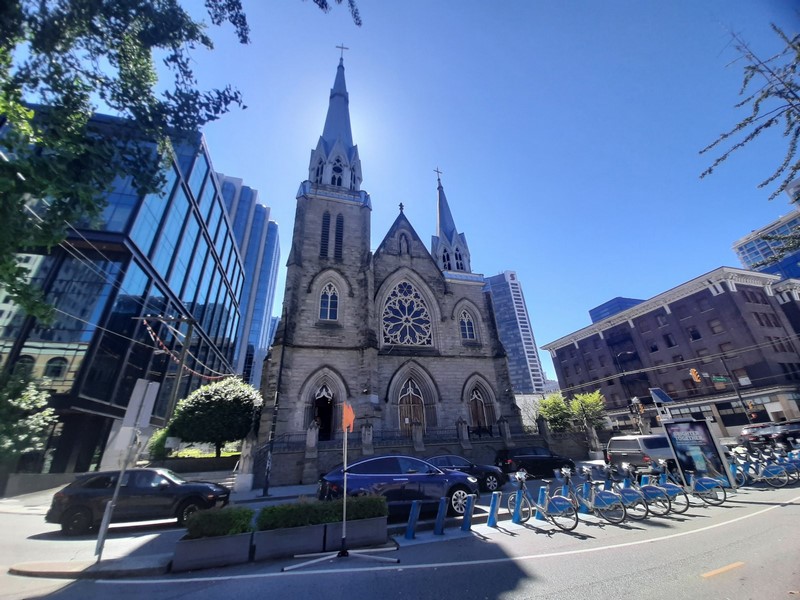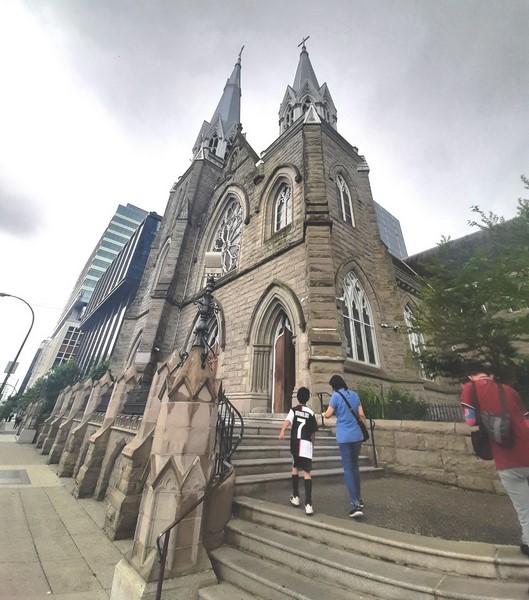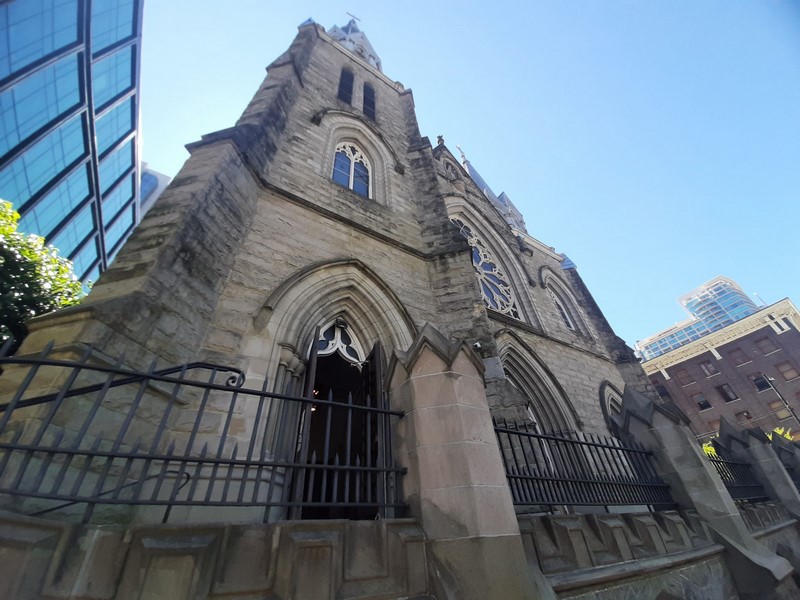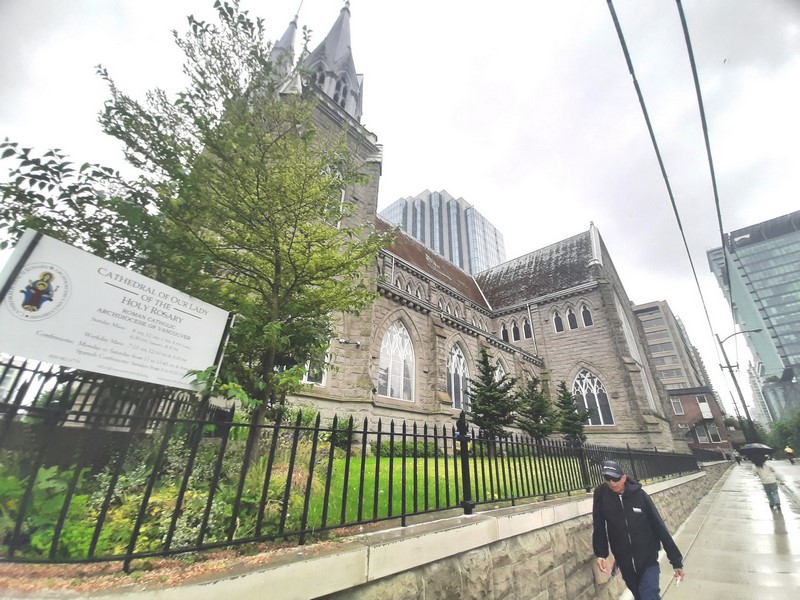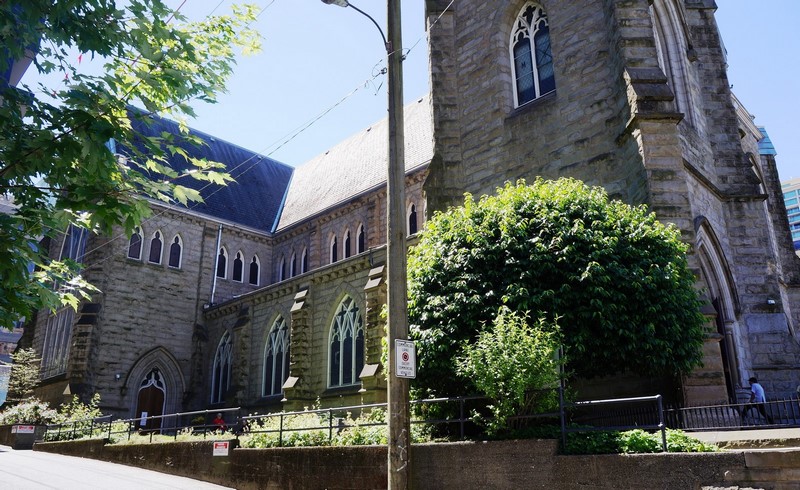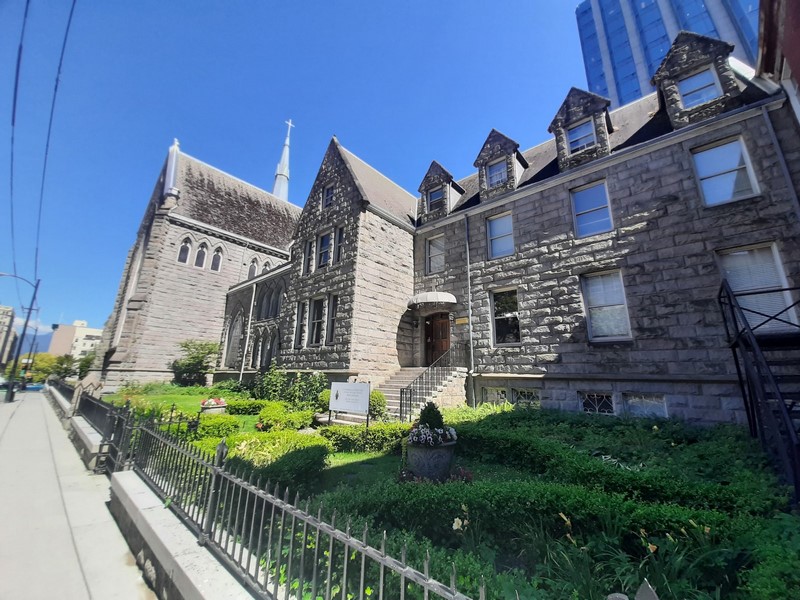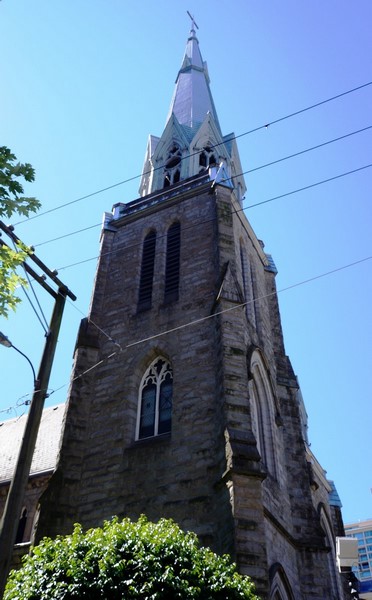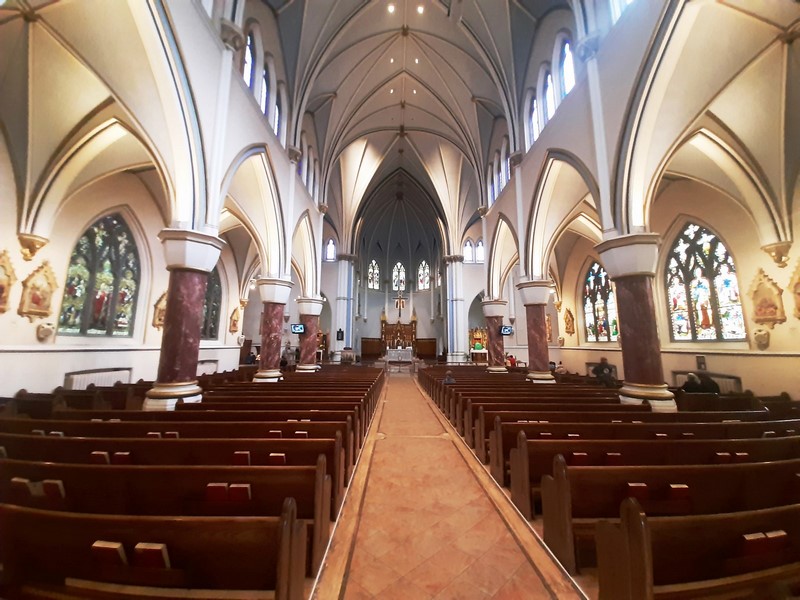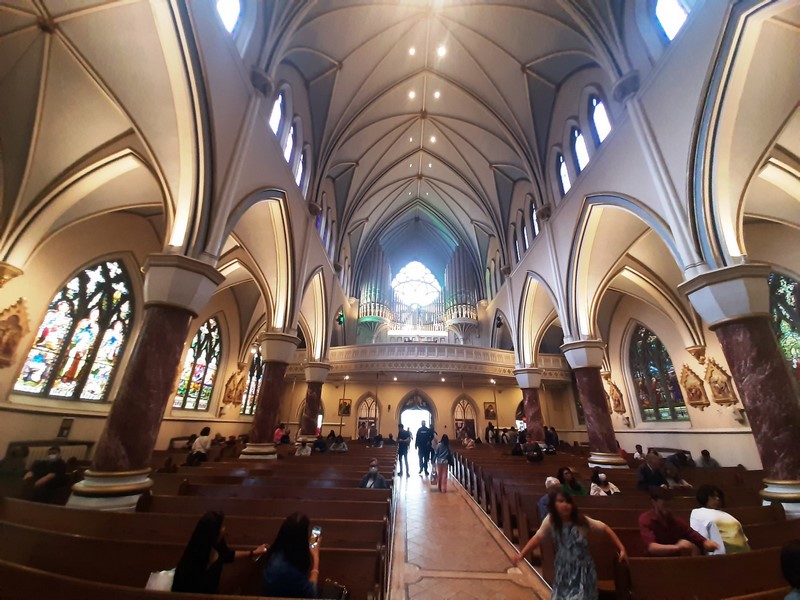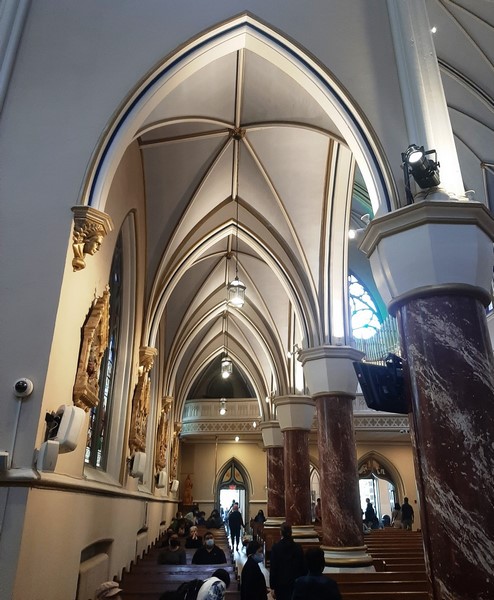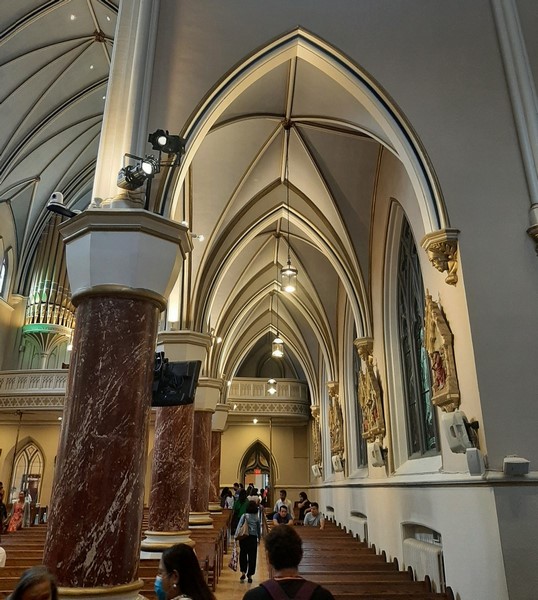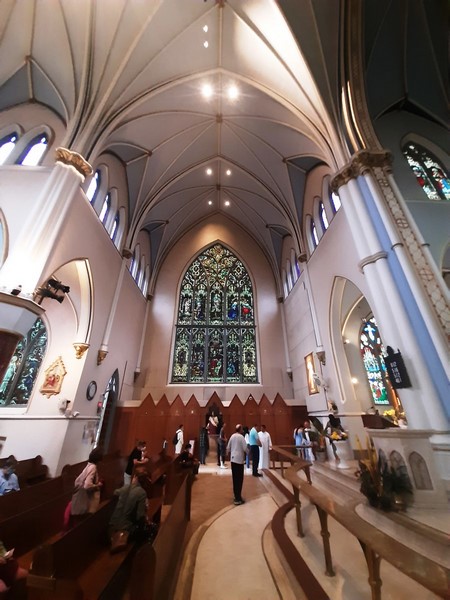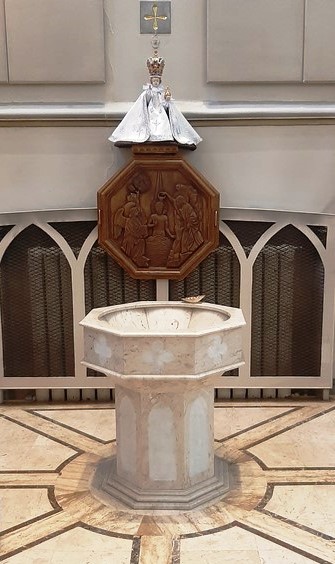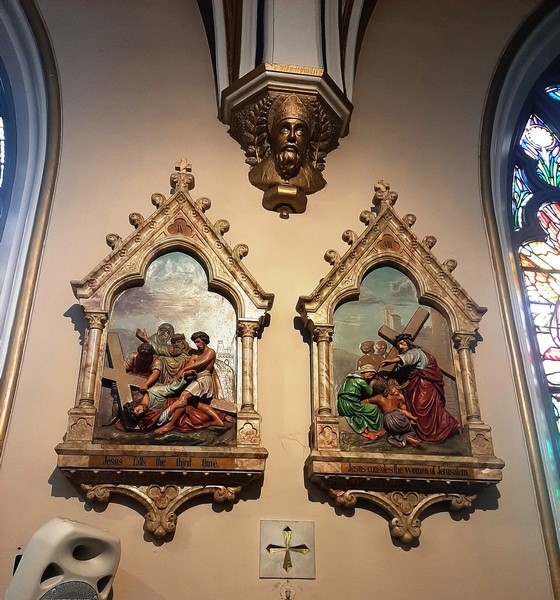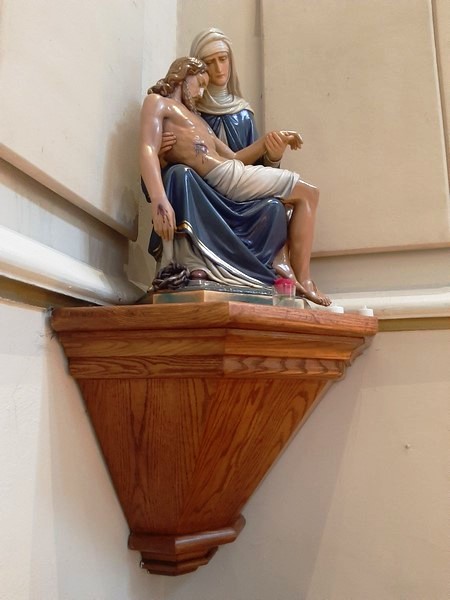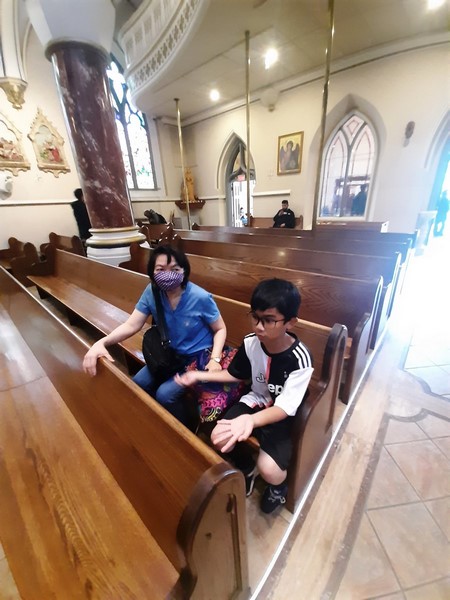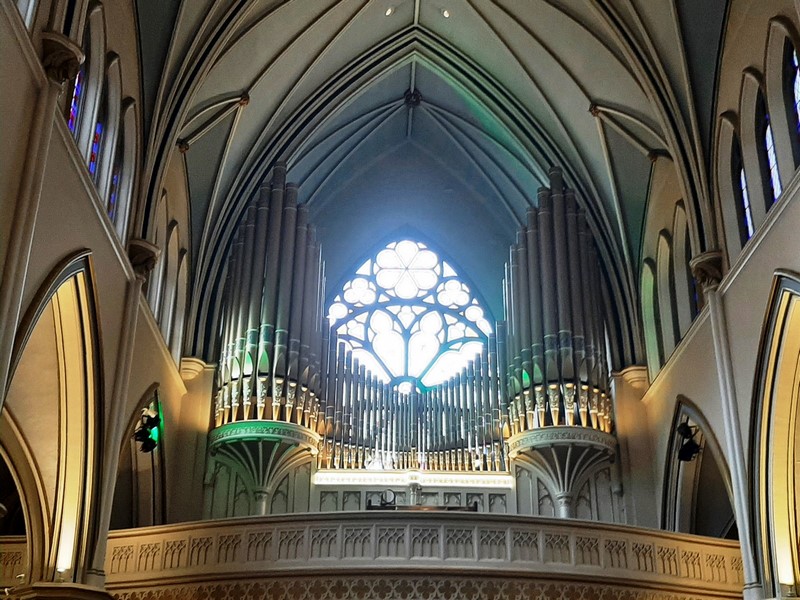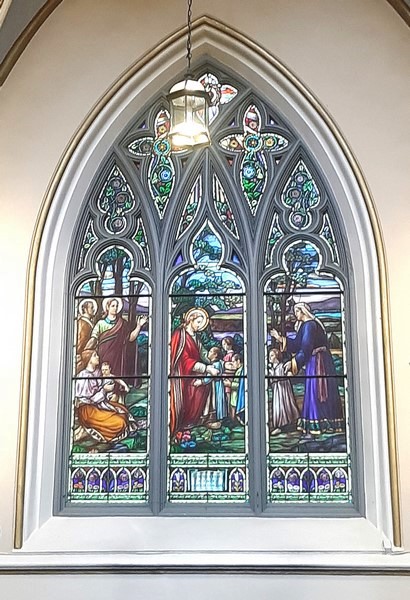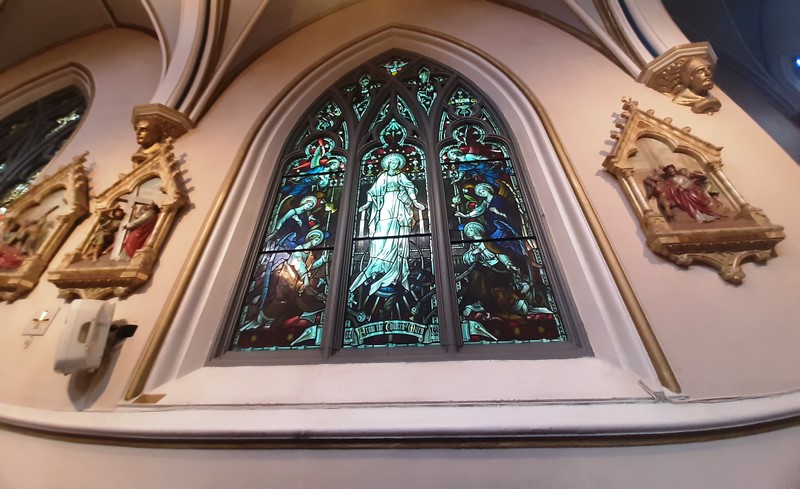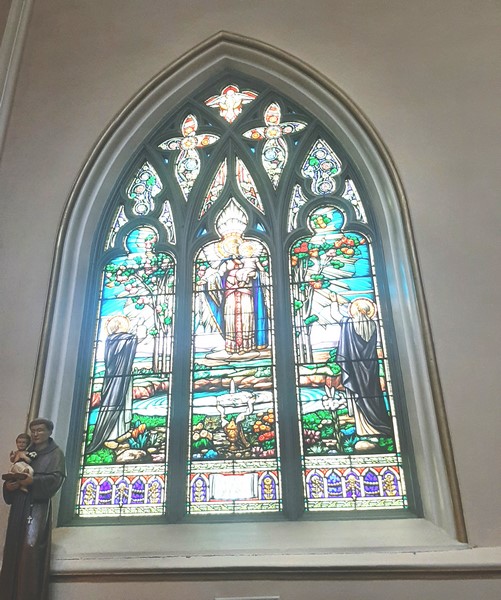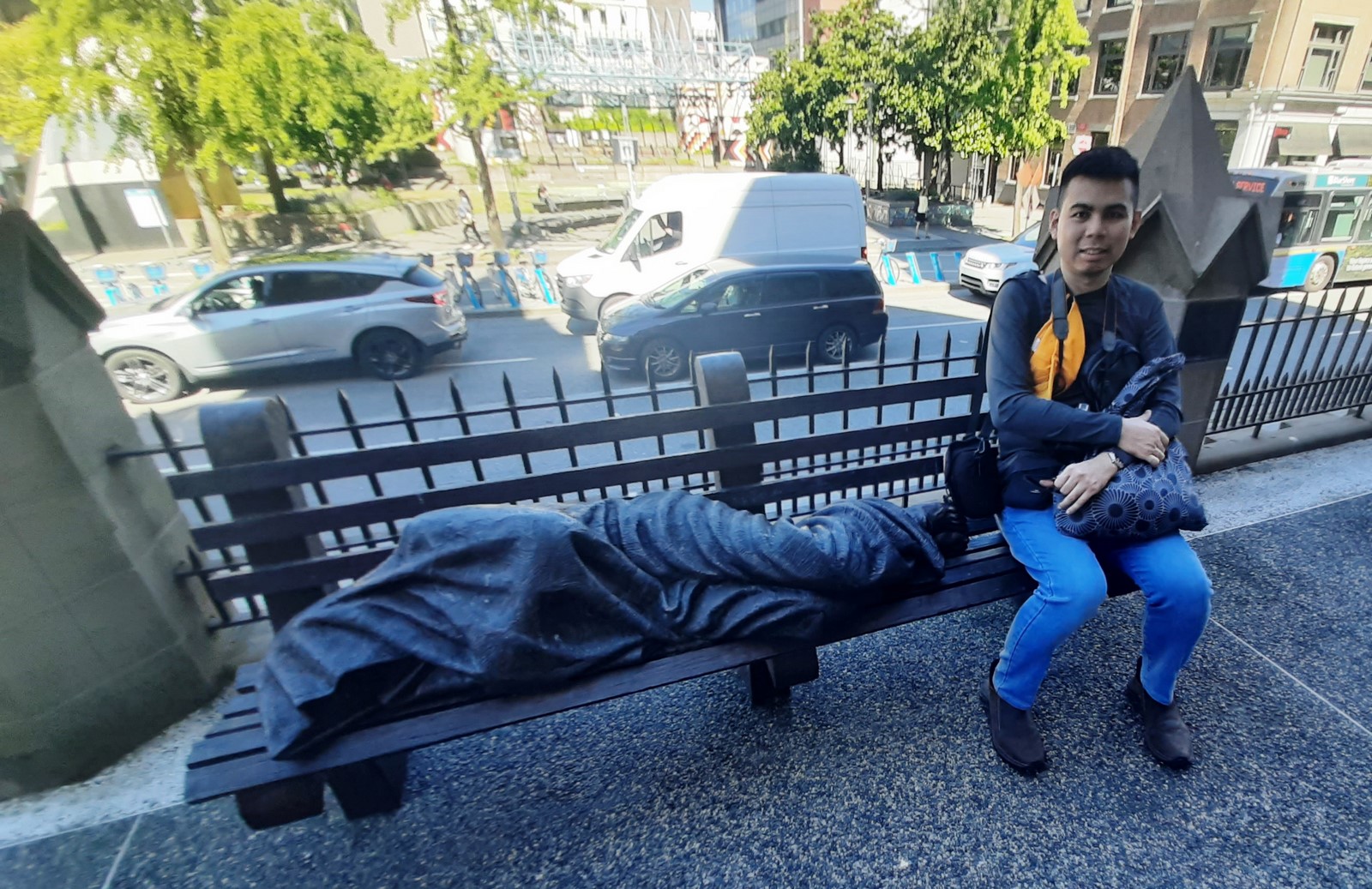The stunningly grand and majestic, 6-storey, 146-m. (480-ft.) long Waterfront Station (Station Code: WF), located on Burrard Inlet, is a major intermodal public transportation facility and the main transit terminus in Vancouver. It is within walking distance or the vicinity of Vancouver’s historical Gastown district, Canada Place, Vancouver Convention Centre, Harbour Centre, Sinclair Centre, the Vancouver Harbour Flight Centre float plane terminal (approximately two blocks west of Canada Place), the heliport operated by Helijet, (adjacent to the SeaBus concourse, therefore allowing passengers to connect to Waterfront Station‘s main terminal building) and the downtown campuses for Simon Fraser University and the British Columbia Institute of Technology.
The current Neo-Classical-style main station building, designed by Barott, Blackader and Webster (a Montreal architecture firm) and built by Canadian Pacific Railway (CPR), is CPR’s third station. It replaced a smaller station, built in the 1890s and previously located at the foot of Granville, one block west, built in chateau-like “Railway Gothic” style like the CPR’s many railway hotels. Its symmetrical red-brick facade is dominated by a row of smooth, white limestone Ionic order columns which are repeated in the grand interior hall, flanking the perimeter of the space.
The main hall features two large clocks facing each other high on the east and west walls while paintings depicting various scenic Canadian landscapes, by Adelaide Langford (wife of a CPR executive), line the walls above the columns.
Rouge Kitchen & Wet Bar, on the street level, occupies the east wing. Other restaurants located within the station include A&W, Jugo Juice, La Prep, Subway, Starbucks and SKK Italy. On the upper floors, some rooms are occupied by business offices.
The bronze statue of Angel of Victory, one of an originally identical trio (the other two angels are in Winnepeg and Montreal), at the front of the extreme east end of the building, was created by Couer de Lion MacCarthy (1881-1979) and was installed in 1921.
A war memorial honoring CPR employees who were killed during World War I, it depicts an angel carrying a dead soldier to heaven. At one time, she was holding s small wreath in her raised hand but, at some point, the wreath was broken and now she holds just a few leaves in her hand. After World War II, the writing on the plaque at the base of the statue was added.
Here’s the historical timeline of the station:
- On May 1912, the construction of Waterfront Station began
- On August 1, 1914, right at the start of World War I, the station was opened as the Pacific terminus for the CPR’s transcontinental passenger trains to Montreal, Quebec and Toronto, Ontario. Canadian soldiers, on their way to the war, departed on this depot.
- In 1916, the paintings lining the walls above the columns were completed.
- On May 29, 1939, residents welcomed King George VI and Queen Elizabeth here (British Columbia’s first visit by a reigning monarch)
- In 1977, Waterfront Station‘s transformation into a public intermodal transit facility began.
- In 1977, SeaBus began operating out of a purpose-built floating pier that was connected to the main terminal building via an overhead walkway above the CPR tracks.
- In 1978, when Via Rail took over the passenger operations of the CPR and the Canadian National Railway, it continued using both railways’ stations in Vancouver
- In 1979, Via Rail ceased using this CPR station when it consolidated its Vancouver operations at Pacific Central Station, the CN station near False Creek.
- On October 27, 1979, the last scheduled Via Rail passenger train to use Waterfront Station departed, with 200 passengers (plus 50 train aficionados who tagged along to Mission), for Montreal, 15 mins. late.
- In the early 1980s, the CPR’s passenger platform and some of its tracks were torn up to make way for the guideway of the original SkyTrain line (Expo Line).
- On December 11, 1985, the Expo Line was opened.
- During Expo 86, SkyTrain operated special shuttle trains between Waterfront Station and Stadium–Chinatown Station(then named Stadium station), connecting the Canadian Pavilion at Canada Place to the main Expo site along False Creek.
- In the early 1990s, Royal SeaLink Express, a private ferry company, ran passenger ferries from a new dock on the west side of the SeaBus terminal to Victoria and Nanaimo but ultimately folded.
- In 1995, platforms were built adjacent to the SkyTrain station for the West Coast Express, which uses the existing CPR tracks. The platforms for the West Coast Express were built in the same location as the old CPR platforms.
- In 2002, Millennium Line trains began to share tracks with the Expo Line at Waterfront Station.
- In 2003, HarbourLynx began operating out of Royal Sealink’s old facility at the SeaBus terminal.
- In 2006, following major engine problems with their only vessel, HarbourLynx folded as well.
- In late 2016, an Expo Line branch to Production Way–University station was created in replacement of the Millennium Line service between VCC–Clark and Waterfront Station.
- In 2009, the Canada Line opened
- In 2018, as most Canada Line stations were built with only up escalators initially, TransLink announced that Waterfront Station‘s Canada Line platforms, as well as two other stations on the line located within Downtown Vancouver, would receive an accessibility upgrade which includes additional escalators.
- In early 2019, construction began on the additional escalators
- In December 2019, the installation of additional escalators was completed.
- In 2020, work on replacing the escalators connecting to the Expo Line was started by TransLink.
- For three weeks in June 2020, access to the Expo Line from Cordova Street was closed, forcing passengers to access the Expo Line from the Howe Street entrance. Because the construction blocked access to the elevators to the Expo Line platforms, a temporary shuttle bus service between the SeaBus terminal, the main concourse area, and Burrard Station was instated.
Waterfront Station was one of the first stations to receive TransLink’s “T” signage (denoting a transit station). Originally installed in the downtown core of Vancouver, this signage helped visitors during the 2010 Olympics as it made transit hubs easier to identify.
Waterfront Station serves as a common terminus point for both the Expo Line (through Vancouver to Northeast/South Burnaby, New Westminster and Surrey) and the Canada Line (through Vancouver to central Richmond and Vancouver International Airport). They have separate platforms which are accessible via the main station building, but require leaving the fare paid zone when transferring between other modes.
The SeaBus passenger ferry, to Lonsdale Quay in North Vancouver, stops on the Vancouver side at Waterfront Station, near the Vancouver Convention Centre. Additionally, Waterfront Station provides West Coast Express commuter rail (Port Moody, Coquitlam, Port Coquitlam, Pitt Meadows, Maple Ridge and Mission) a connection to the SeaBus passenger ferry. The station is also accessible to various local, suburban, and express bus services provided by TransLink.
Waterfront Station: 601 West Cordova St. (between Granville and Seymour Sts.), Downtown Vancouver, British Columbia V6B 1G1, Canada. The station has also two street-level entrances – Howe Street to the west (for direct access to the Expo Line) and Granville Street to the south (for direct access to the Canada Line). Coordinates: 49°17′09″N 123°06′42″W

